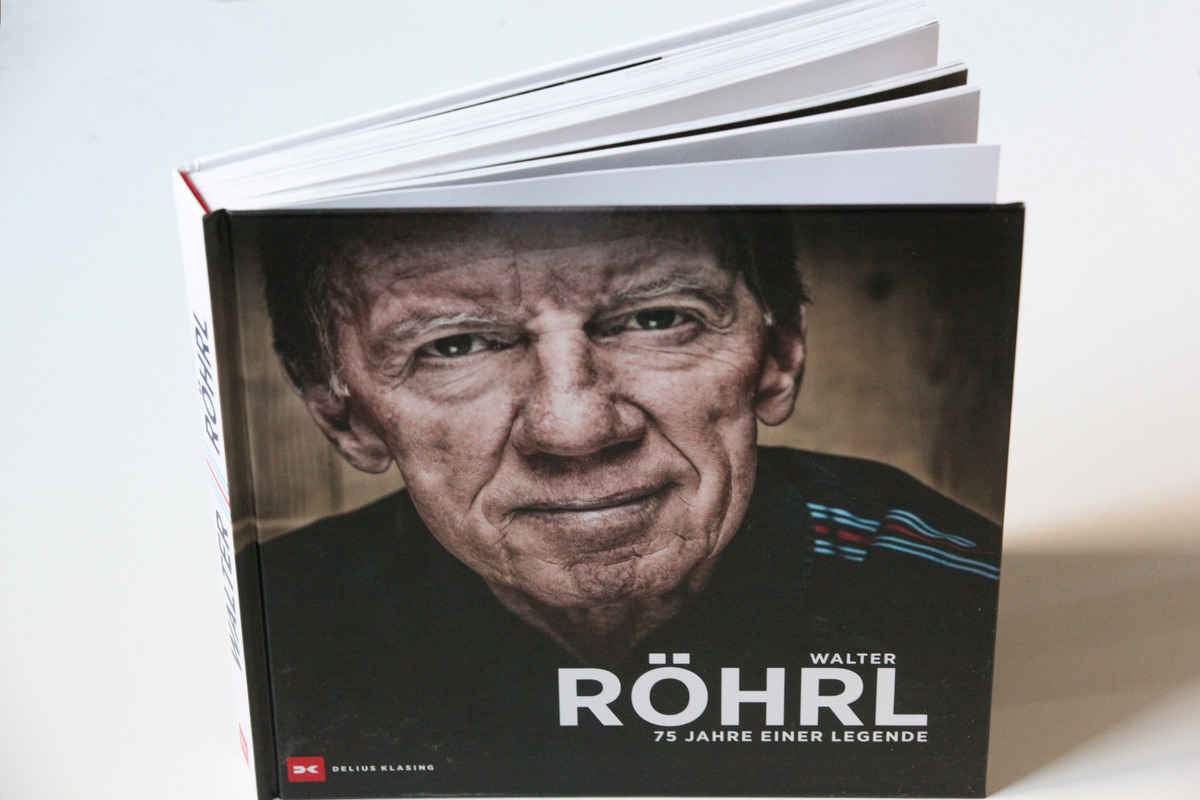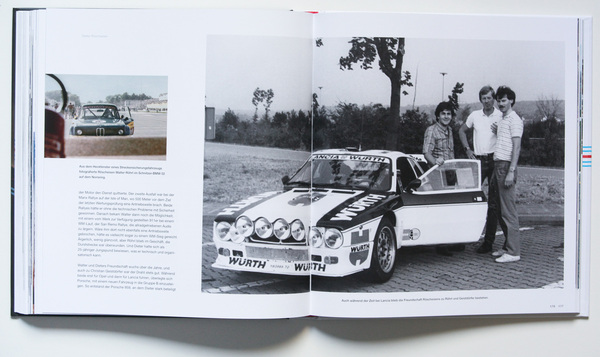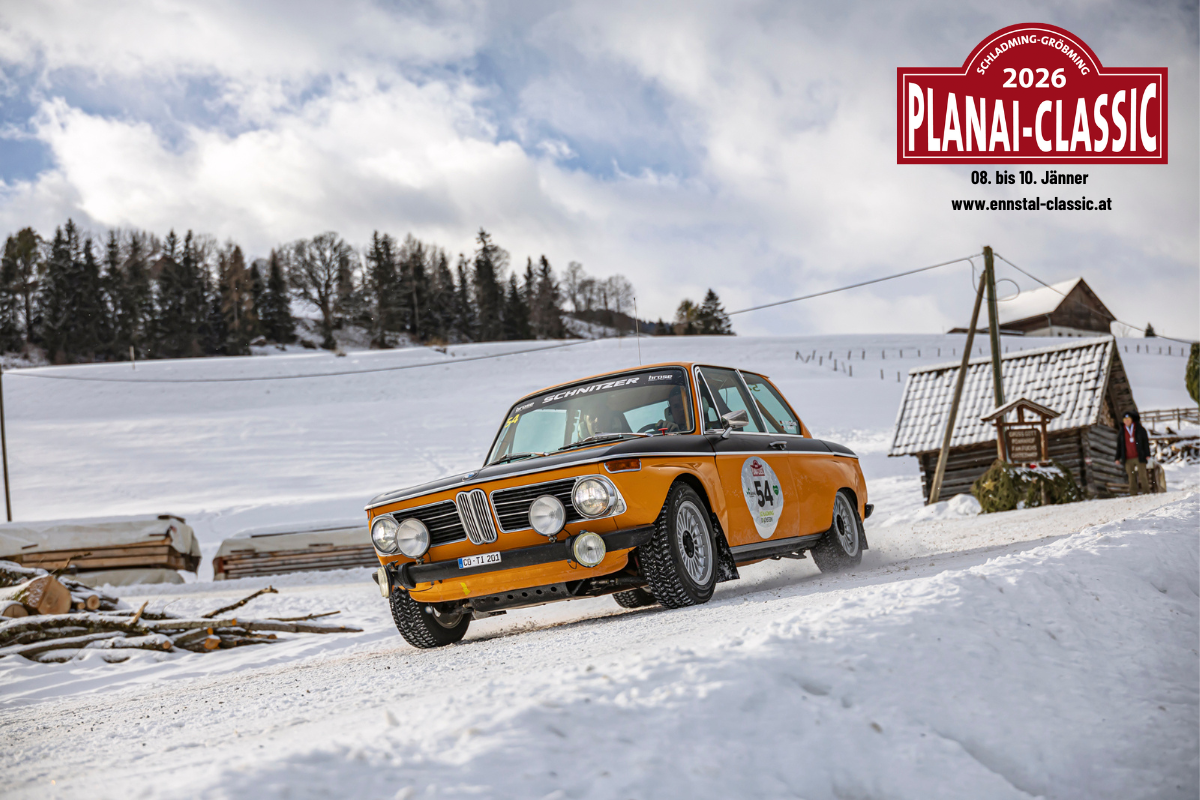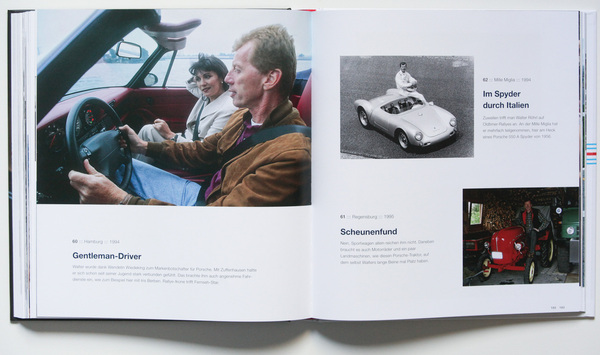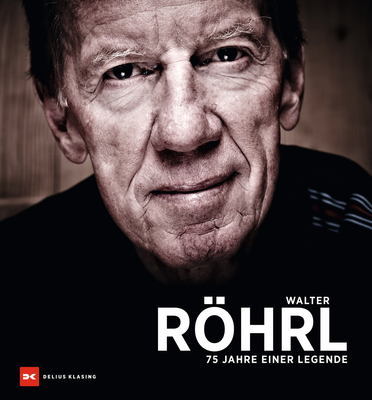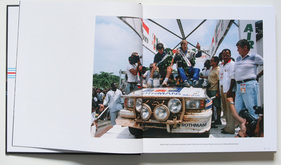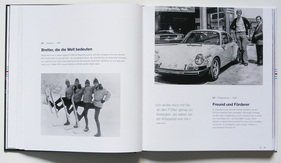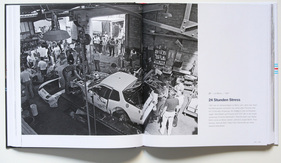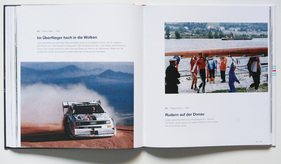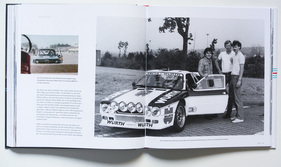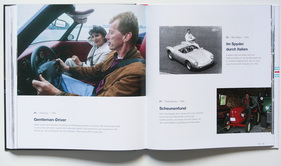Tall, lean, lanky, with the top of his head combed tightly to the right, an ascetic person sits opposite me, his left hand gently stroking the back of the cat on his lap, while the "long man from Regensburg" talks about his last drive in the then new Mazda MX-5. That was a few years ago, "but I just ordered it. Out of the car on the phone." That's him.
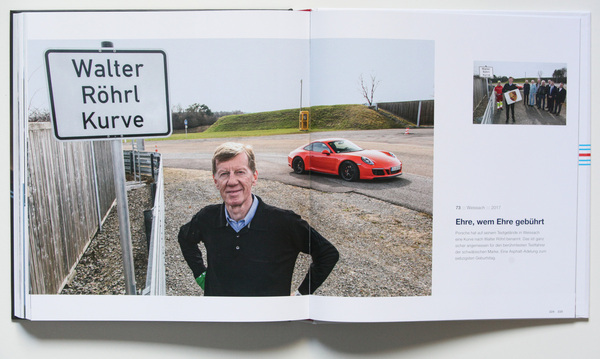
Consistent down to the last sinew; and employer Porsche had to accept the choice of car. On the way back from a Porsche event, Walter Röhrl was 20 minutes ahead of the others in the Mazda. His joy was clear to see. Röhrl turned 75 on March 7. Karsten Arndt and Röhrl's long-time co-driver Christian Geistdörfer have written a tribute to him for his birthday.
An approach
"Walter Röhrl - 75 years of a legend" is the title of the book, which takes a two-part approach to Röhrl's life on 240 large-format pages. On the one hand, selected companions of the birthday boy have their say, some of whom Geistdörfer visited especially for the interview, including race directors, team managers, colleagues, competitors, developers, journalists, filmmakers and others.
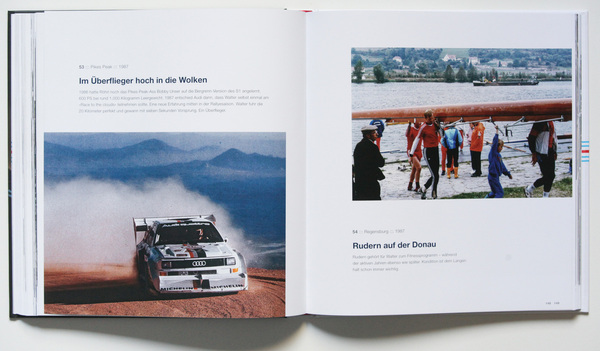
On the other side, Geistdörfer's book presents a retrospective of 75 moments from Röhrl's life, divided into four segments. You can be sure Röhrl will look through the whole thing. Pictures are rather annoying to him, and what others thought or think of him was and has always been the same to him. He just wanted to be the best driver.
Personal stories, private photos
The fact that no single biographer has written about Mr. Röhrl, but many different contemporary witnesses and companions, is a nice change from the usual hero-worship monotony and provides one or two surprising and amusing anecdotes. But why Jean Todt has to tell his life story without any connection to Röhrl (apart from the fact that they happened to be active in rallying at the same time) is not quite clear to us. Timo Bernhard was at least able to convince Walter of the advantages of fireproof underwear.
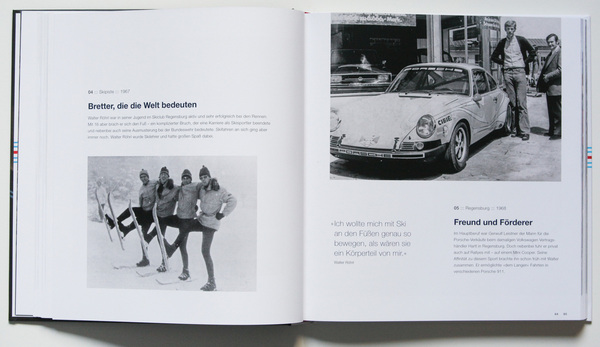
The more personal photos are particularly appealing. Communion and wedding photos of Röhrl are far rarer than the usual shots of award ceremonies. The private pictures of him skiing or milking cows show Röhrl not as a much-praised rally driver, but as a "human being", as they say today, who sometimes lets himself be pulled on skis by Rauno Aaltonen in a BMW. The photos from Röhrl's private album naturally also show his fleet of vehicles over the decades - including a "Porsche 911 Turbo with 3.3 liters of displacement and 260 hp" - which should actually have 300 hp. Such an error should not happen in a book about perhaps the most famous Porsche ambassador, but fortunately it is only a side note.
How it all began and almost ended again
He made his first major appearance at the 1972 Olympic Rally in a privately registered Ford Capri. As if unleashed, the unknown Röhrl set the fastest times and led the field at times. However, his times were canceled; it could not be that the young, unknown man was so foolish with the elite. In the end, bearing damage to the engine resolved the whole situation to everyone's satisfaction. Röhrl was not yet to triumph; the rally world had not yet come apart at the seams.

But Röhrl switched to Opel's Irmscher team and became European champion in 1974. He then competed unsuccessfully for Opel in the World Rally Championship. But that did not mean the end of his career.
Reaching the finish line with Fiat
The Regensburg native compensated for the unsuccessful 1977 season with Opel - he did not even reach the finish line in five WRC events - with private entries in a Porsche 911. Due to the adverse conditions at the San Martino di Castrozza Rally, he decided not to start in order to protect the expensive 911. At dinner before the start day, Fiat team boss Daniele Audetto spontaneously offered him the chance to compete in the remaining test car, a Fiat 131 Abarth. With this team, Walter's dream of winning the Monte Carlo Rally seemed to be getting closer. Röhrl's team spirit in his first outing for Fiat was underlined by his stop shortly before the finish line, when he let team-mate Maurizio Verini pass him in third place to score more European Championship points. The foundation stone for his popularity in Italy and within the Fiat Group had been laid.
Monte Carlo and world champion after all
From then on, things went uphill. The Fiat was competitive; the team was adept. The opponents were among the biggest on the scene and went by the names of Mikkola, Munari and Alén. In 1978, the Monte Carlo attempt failed because the Röhrl/Geistdörfer team lost four minutes due to a teammate standing in the way. At the finish, they were the best team from the Fiat squad, 3:19 minutes behind the winner Jean-Pierre Nicolas in a Porsche 911. But in 1980, the big moment arrived and Röhrl won the "Monte" - with a lead of over ten minutes; worlds apart in rallying, then as now. And now, from Röhrl's point of view, it was the end. He had reached his goal. It was only when his co-driver asked him whether he no longer enjoyed driving that he changed his mind. He became World Rally Champion with 118 points ahead of Mikkola (64 points).
Four-time Monte winner and two-time world champion
This was followed by a decade of motorsport successes. Röhrl battled his way through the 1981 season, in which Mercedes-Benz let the Regensburg native, who was under contract, run aground due to the foreseeable dominance of Audi and decided against the planned involvement with the SLC. But from 1982 to 1984, Röhrl won the Monte Carlo Rally three more times in three makes of car, always at the start of the season. In 1982, he even surprisingly became world champion for a second time in the supposedly inferior Opel Ascona 400 against the Frenchwoman Michèle Mouton in an Audi Quattro, who literally blew the world championship lead in the last world championship round.
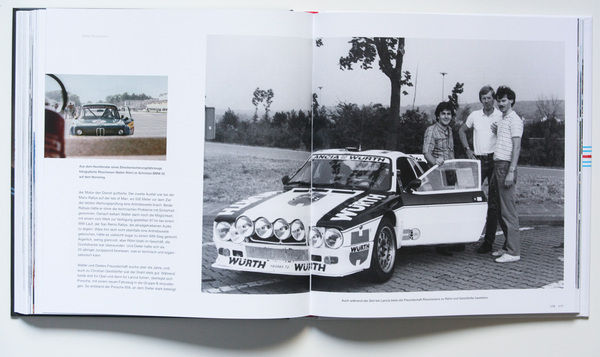
Since, according to Audi boss Ferdinand Piëch, it was cheaper to drive with Röhrl than against him, the dream pairing finally came about in 1984. Audi had revolutionized the world of rallying. Rallying was more popular than Formula 1. Today, Group B is regarded as the golden era of rallying. The Audi Sport-Quattro developed into a monster and Walter became its conqueror. "I felt like I was riding on a bullet. I shot from bend to bend like a ricochet." With his fourth Monte victory, Röhrl had also set his sights on "victories for eternity".
Exceptional sportsman
Röhrl wins the San Remo Rally with the Audi Sport-Quattro, wins the Pikes Peak hill climb in 1987, drives Trans-Am in 1988 and IMSA GTO in 1989.
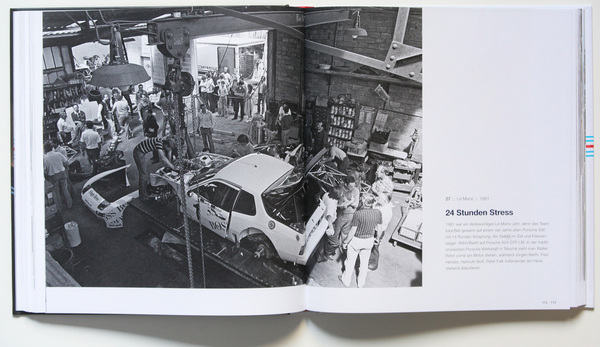
He also made the DTM unsafe for three years with the Audi V8; always superior, remaining true to himself, taking care of the material, not breaking anything. He finished second in the 1987 Safari Rally in an Audi 200 Quattro. While teammate Mikkola went the whole hog, Röhrl gently lifted the sedan over every bump in the road and "only" came second. Röhrl is a sportsman through and through, an enthusiastic skier, rower, golfer and racing cyclist. At Audi, the entire communications department began to revolve around Röhrl's racing bike. From 1993, he was responsible at Porsche for turning good sports cars into Porsches - no more competition. Audi's small touring car mindset was no longer suitable for Röhrl's big leaps. Porsche became his home to this day.
Conclusion
Walter Röhrl is an exceptional athlete. Even after 30 years of retirement from motorsport, his victories remain unforgotten and his popularity unbroken. For decades, he was the benchmark for the final acceptance of Porsche models. Outwardly modest, always true to himself. Instead of taking part in a promotional event organized by his sponsor Rothmanns, he preferred to travel by train from England in 1982 rather than play the stage clown. Wherever and whenever he competed, he wanted to be among the best; not just behind the wheel. Walter Röhrl was a role model, but he hated nothing more than honors. No European Championship or World Championship trophies adorn his showcases - simply because he never went to the FIA awards in Paris. He, who only wanted to win the Monte Carlo once because, in his opinion, that was the highest accolade, fortunately did not lose his passion for driving even after his first victory. His 75th birthday book would be many an anecdote and fabulous time poorer.
The authors have dispensed with time tables and results lists as well as a chronological career history. "Walter Röhrl - 75 Years of a Legend" is not a biography in the classic sense, but a collection of stories and lesser-known perspectives on a very well-known personality; in other words, a 234-page birthday serenade.
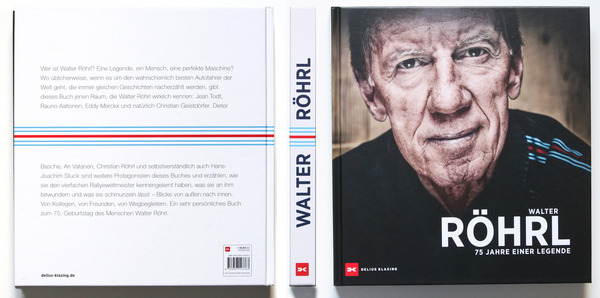
Bibliographical information
- Title: Walter Röhrl - 75 years of a legend
- Authors: Christian Geistdörfer, Karsten Arndt
- Language: German
- Publisher: Delius Klasing, 1st edition 2022
- Format: 276 x 297 x 29 mm, hardcover with dust jacket
- Size: 232 pages, 194 photos
- ISBN: 978-3-667-12376-3
- Price: € 59,90
- Buy/order: from the publisher Delius Klasing, at amazon.de or in relevant bookstores
